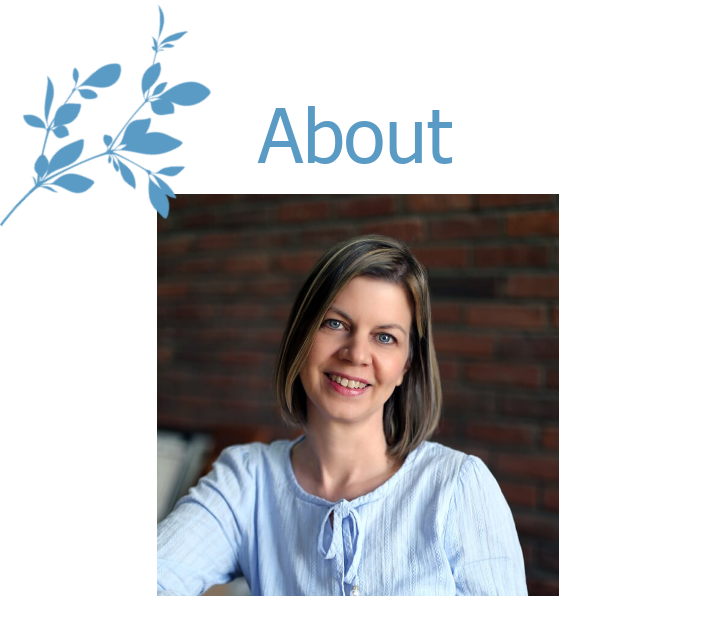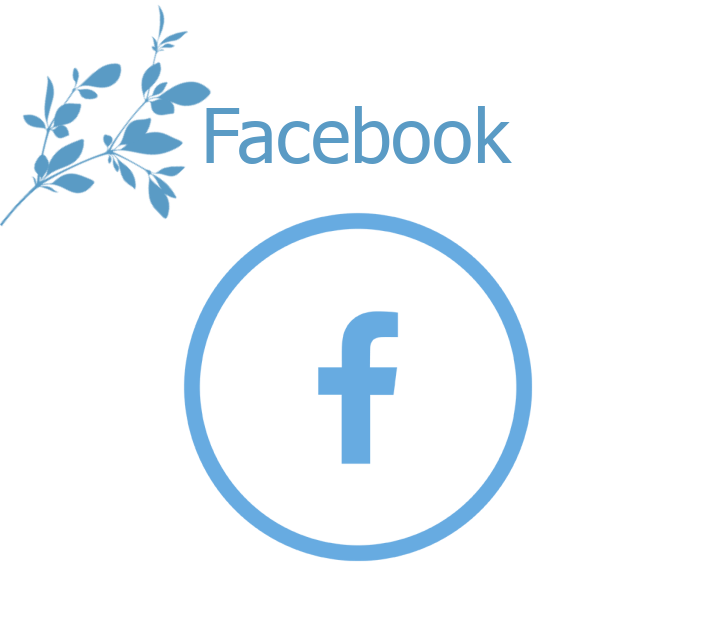People who’ve read my blog before (particularly some of the recipes, gluten-free or otherwise) may have noted that we do not bake with sugar. Instead, we’ve always used honey, substituted at 1/2 the quantity of honey for the amount of sugar called for in recipes. It’s an almost fail-proof formula, and we do it in an effort to be healthier.
But honey here is really confusing to buy. There are all different kinds, for varying prices. You can buy creamy honey or clear–of varying shades–honey from different kinds of flowers, honey in the supermarkets, honey in specialty stores.
We always bought our honey here from a lady who sold it by the side of the road. She kept hives and presumably, she was a farmer. This is how we bought our honey in Canada–unpasteurized from a beekeeper.
Our “honey lady” has since moved, and I can’t find her, but I thought I’d found someone else. We visited their roadside location, and they let us look inside the hives and told us all we could understand (and a lot we couldn’t) about how the bees make the honey, and how they collect it.
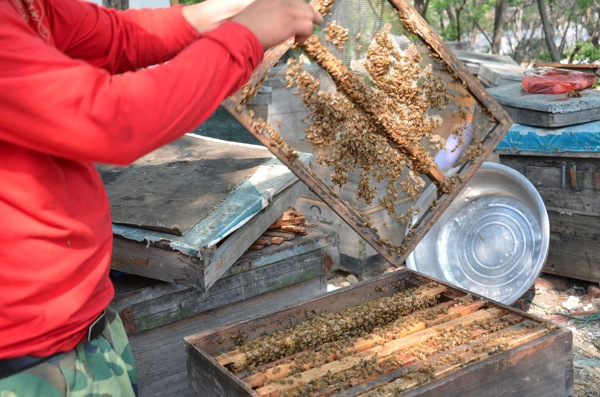
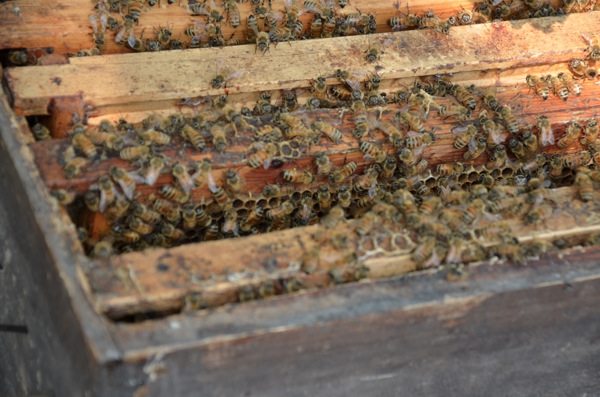
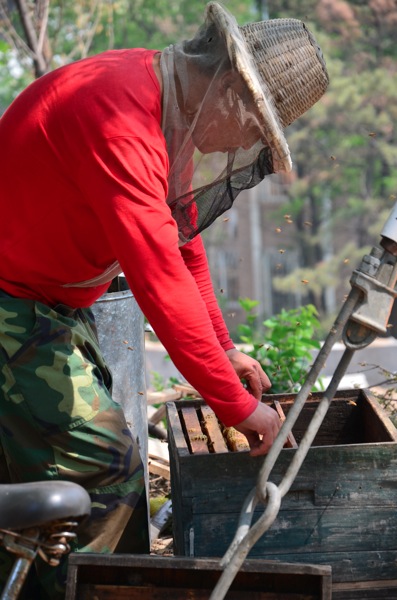
We were pretty excited to find a new source for honey until I learned a few things that gave me some cause for concern.
- Some Chinese friends of ours told us they had a concern about the honey here. They don’t buy from the supermarket, because they say the bees that make that honey are fed sugar solution, diluting the quality of the honey. Instead, they travel off into the country, where they have a relationship with a beekeeper. They buy a log that the bees made their honey in for three years, undisturbed by human influence. They bring that honey back to the city and bottle it. One kilogram? $50 (Ack!).
But it turns out using sugar solution is pretty common, both here and in North America. And there are bigger concerns–some our friends knew nothing about.
- This article describes some of those problems. Apparently, honey in China has long been a big export, and its quality is in question. Some claim it could be diluted with water or even high fructose corn syrup. Turns out the only way to know for sure if the honey is pure is to have it tested at a lab, where they can determine if any pollen is present or not. This may or may not be a good evaluation of whether the honey is the genuine article or not, since some claim that the absence of pollen is a result of the honey being strained for impurities, to give the consumer the product they expect to see on the supermarket shelves.
This made us wonder. Did our honey friends extract the honey themselves? Or were they working for someone–someone who might use additives? And what about the antibiotics? Is there any way to ensure the honey we consume isn’t exposed to that?
We’re not sure about our roadside friends. We do have some concerns about the way their product is stored–in aluminum containers with rusty spigots–so a couple of weeks ago, I found a great source for delicious honey that seems like it’s got to be pure. It’s stored in large stainless steel pots. And she sells the creamy variety (which, incidentally, is amazing on gluten-free bread with ground almonds on top because almonds here actually taste like almonds are supposed to taste–you know the almond extract taste you wondered about).
However, when I returned on Saturday to buy more to make Sprout’s birthday cake (she turns six on Wednesday), the store had moved. I still have a business card, but since phone conversations aren’t my forte, I’ll have to wait until a friend is handy to help me understand where I can find her.
Honey. Seems like it should be simple, but apparently, it’s just one more thing that’s more complicated here than we first thought!
In the meantime, for the cake, I bought honey in a plastic bag (yup) from the same name brand as I found at my new favorite spot. Post about said cake coming up. (There was an amazing cake for JavaMan’s birthday too, with fresh sweet cherry sauce as a topping, but it was consumed before the cameras came out, and thus escaped being blogged about.)


